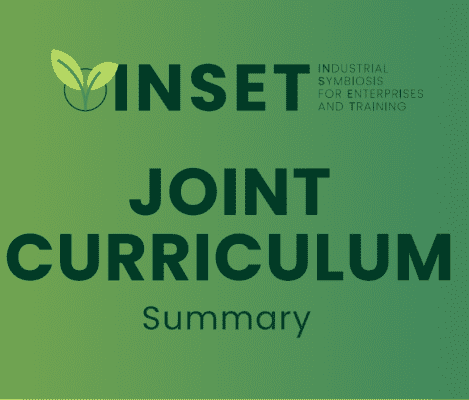The INSET project continues to push boundaries in Industrial Symbiosis (IS) education, providing essential tools to foster capacity building and knowledge sharing. At this point in the project, one of its most significant outputs are the Competency Map and the Joint Curriculum—a comprehensive framework designed to support individuals, organizations, and territories in advancing IS practices effectively.
The Competency Map: a blueprint for IS skills
The INSET Competency Map is a cornerstone resource, identifying the skills and knowledge essential for advancing IS across sectors. Built on insights from global best practices and stakeholder consultations, the map offers a structured approach to developing IS-related competencies. It serves as a versatile tool for organizations and territories aiming to enhance their IS capabilities, guiding workforce development and strategic planning.
The Joint Curriculum: tailored learning pathways
Using the Competency Map as a foundation, INSET has developed a modular Joint Curriculum that adapts to diverse learning needs. The course is designed to provide both a comprehensive training experience and the flexibility for learners to focus on specific areas of interest.
The curriculum includes:
- Module 0: Introduction (4 hours) – This introductory module helps learners understand the course structure, identify their training needs, and orient themselves effectively.
- Module 1: General Context of Industrial Symbiosis (24 hours) – Covering the principles and benefits of IS, this module introduces the role of IS in fostering sustainable industrial practices.
- Module 2A: Designing IS Projects (24 hours) – Focused on strategic planning, this module explores opportunity identification, ecosystem analysis, and stakeholder engagement.
- Module 2B: Managing IS Projects (24 hours) – Emphasizing practical implementation, it covers project coordination, monitoring, and optimization.
- Module 3: Legal and Financial Issues (12 hours) – This module delves into regulatory frameworks and funding mechanisms for IS projects.
- Module 4: Communication and Soft Skills (12 hours) – Developing essential communication strategies and interpersonal skills critical for IS success.
Participants can choose between two tailored pathways: the IS Planner or the IS Project Manager, each offering a unique combination of modules. A Full Course option is also available, covering all modules in 100 hours.
The course is delivered entirely online, ensuring accessibility for a broad audience. Participants can learn at their own pace, choosing the modules that suit their needs. A flexible assessment system allows learners to take quizzes after completing modules or directly, based on their confidence level.
To explore the full details of these outputs, download the complete Competency Map and Joint Curriculum using the links below:
We invite you to dive into these resources and join us in advancing IS for a more sustainable future.
Stay tuned for updates and success stories from organizations adopting the INSET framework. Together, we’re building the skills to transform waste into value, fostering collaboration, and driving systemic change.
